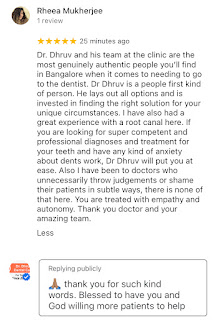Rotten apple: Decay in one tooth can spread to the neighboring tooth, just like a rotten apple can spoil another. Not stay hungry, stay foolish: Stay healthy, stay good.
Decay—in truth, society, or even in teeth—could be better aligned by our dear orthodontist friends, ensuring no cyclic relapse.
Toothsi speechless: While scanning by a dental technician seems acceptable, the delivery of treatment must be done by a dentist. Surprisingly, actors and actresses often seem to possess better orthodontic "knowledge" than actual orthodontists. Why can’t they run preventive care measures or educational campaigns, like the Gutka campaign by an actor, alongside corrective measures? I'm sure they are
Disclaimer: Educational campaigns are acceptable, but not *advertisements. Google Ads remains a question mark, as their policies frequently change—often seeming to align with their own interests or pressure from larger entities. This is solely my professional point of view, coming from the preventive and community dentistry department, though my knowledge in this area is limited. In my final year, I got my highest marks in orthodontics and thought, "Okay, I’ll become an orthodontist." Then, during my practical examination, my internal professor failed me, delaying my ability to carry it forward until the next semester. I followed the American formula of learning: You’re not failing; you’re just learning to be better and truly understand the knowledge. Later, I found out that my internal professor didn’t even know the passing mark, leaving three-fourths of the batch in the same boat. This lack of empathy definitely contributed to some students committing suicide—a tragic reminder of how critical empathy is in such environments.
A shoutout to Dr. Kenneth Tan, who was an exceptional professor in India. He didn’t just make us underline lines in textbooks but ensured we truly understood the subject.
Also, a special mention to my friend and fellow dentist, Dr. Karan Ganapathy, who has been consistently delivering on his promises for over a decade—whether it’s treating one patient or many, money or no money, personal reasons or professional. Month after month, he remains dedicated. He even started his own invisible braces company, which we use in our clinic.
You can check out the orthodontic video we made here: Watch on YouTube.
To prevent dental decay while wearing brackets, experts recommend using Phosflur mouthwash (available here) along with orthodontic brushes. These are essential to avoid white spot decay, keeping your teeth healthy during treatment. Candid moment: No pizza, chewing gum, and more while undergoing traditional orthodontic treatment. Orthodontists patiently work for years, sometimes on ₹500 or ₹2000 monthly fees from patients, ensuring the uptake of preventive and corrective measures.
In our practice, we implemented full payments to avoid situations where patients disappeared after completing treatment without honoring EMI commitments—payments that often didn’t even cover the orthodontist’s monthly travel expenses. Many orthodontists, after years of dedication and 8+ years of studying, struggle to find sufficient opportunities locally and move abroad.
Now, with global companies like Invisalign opening the market to general practitioners—who were traditionally the leaders—it’s time for dentists to shake hands, collaborate, and uphold standards, ensuring proper treatment for patients while protecting the profession from being diluted by non-dentists.
(Ethics for AI, as well as the internet over the years, are still being established. Finally, simple common sense applies alongside treatment developed by scientists and delivered by dentists.) *Ads were allowed as per the ethics book conventionally and initially, but only for relocation and opening announcements to inform about the location and address. The internet wasn’t in the game then, and this was permitted for six months only. Neither the surplus of competition nor better dentist systems were a factor then. However, preservation and protection remain the way for progress.It makes sense to inform new and old patients about updates while relying on skills, goodwill, word-of-mouth, and good intentions to build a practice over time. Maintaining relationships and keeping communication lines open with patients is essential. My patients convey that they like to receive updates every six months to a year, which aligns with the annual reminders we usually send out.




Comments
Post a Comment